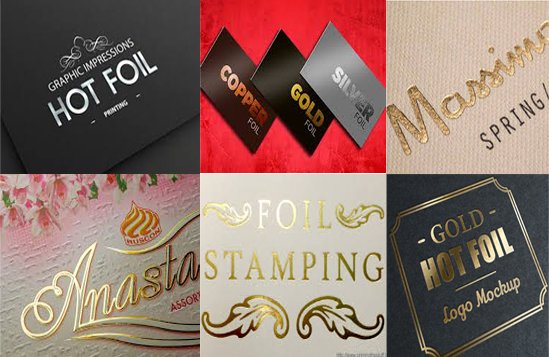Hot Foil Printing
The process of hot foiling is a technique that may be used to give a range of materials a shiny or glossy surface. This method has been utilized for several centuries in the printing industry, as well as in the bookbinding industry and other fields where a luxury and eye-catching finish is sought. Because it enables hobbyists and owners of small businesses to give their handcrafted goods a more polished and professional appearance, hot foiling has become an increasingly popular technique in the world of crafting in recent years.

This page will discuss the history of hot foiling as well as the process itself, as well as the various types of materials and instruments used in the process, as well as some popular applications of this method.
Hot Foiling: A Brief History
The printing process known as “hot foiling” can be traced back to more conventional methods that date to the 15th century. In the early days of printing, images, and text were created on paper by transferring them from metal blocks or plates. These were then copied onto paper. Late in the 19th century, a new method was discovered that involved the utilization of a machine that was able to apply heat and pressure to transfer metallic foil onto paper, so producing a finish that was glossy and reflective.
This method gained popularity not just for printing business cards and invitations but also for bookbinding and packaging. It was also used to bind books. Hot foiling was also utilized in the automobile and aerospace sectors in the 20th century to provide beautiful accents and branding.
Today, the process of hot foiling is utilized in a wide range of industries, including graphic design, advertising, and packaging, amongst others. Crafters and painters who want to give their works a unique quality also frequently use it because of its versatility and adaptability.
The procedure is known as Hot Foiling
The method of hot foiling includes the application of heat and pressure to a surface in order to impart a shiny or glossy finish to it. The following is a step-by-step explanation of how the process is carried out:
generate a design or image that will be transferred onto the surface before moving on to the next step of the hot foiling process, which is to generate the design. This can be accomplished with the help of specialized software for graphic design, a stamp or die-cutting machine, or even by hand.
Plate: Once the design has been finished, a reversed image or text is etched into a metal plate and used to produce the plate. After being heated, this plate is then positioned atop the area that will be foiled.
The heated plate is then sandwiched between a roll of foil that is either shiny or glossy, and this completes the process. The application of pressure causes the foil to adhere to the surface, resulting in a finish that is either metallic or glossy.
After the foil has been applied to the surface, it is necessary to wait for the surface to cool before removing any extra foil.
Components and Utilities Necessary for Hot Foiling
The process of hot foiling can be carried out on a wide range of substrates, such as paper, cardboard, leather, fabric, and even plastic. Paper and cardstock are the most typical materials utilized for the process of hot foiling.
The following are examples of some of the tools used in hot foiling:
A hot foil stamping machine is a device that applies heat and pressure to a metal plate and foil in order to create an impression.
Plate made of metal: The design is put onto the surface by using a metal plate as a transfer medium.
Foil: The foil can be purchased in a wide range of colors and finishes, such as holographic, metallic, and glossy, amongst others.
Adhesive: If the foil is having trouble sticking to the surface, an adhesive might be able to help.
equipment for cutting: A die-cutting machine or scissors are two examples of cutting equipment that can be used to make the pattern or shape that will be foiled.

